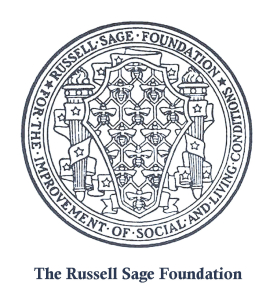About This Book
This booklet presents the draft of the Uniform Small Loan Law, regulating lending in the amounts of $300
This booklet presents the draft of the Uniform Small Loan Law, regulating lending in the amounts of $300
This booklet reprints an article published in The Family of July 1930. It notes that during the summer of 1929, at the request of the Family Welfare Association of America, the Department of Statistics of the Russell Sage Foundation studied the salaries paid by the member agencies of the association. The study included information on the number of weeks of vacation allowed with pay to each worker on the staff. The booklet reports the results of the study.
RALPH G. HURLIN was director of the Department of Statistics of the Russell Sage Foundation.
This booklet presents the results of a study of salaries and certain related work conditions in the field of medical social work made by the Department of Statistics of the Russell Sage Foundation in 1937. The study's main purpose was to estimate the current salary levels for various positions in this type of social work and to indicate the variations in these levels. The study was a sequel to one made in 1933, which recorded a general decline in medical social work salaries from 1930 to 1933, and it was planned to show how much improvement, if any, had been realized by these workers during four years of recovery.
RALPH G. HURLIN was director of the Department of Statistics of the Russell Sage Foundation.
This booklet summarizes statistics of casework operations in 1937 reported monthly to the Department of Statistics of the Russell Sage Foundation by a selected group of private family welfare agencies. It includes information on the quality of the data, month-to-month changes, active cases per month, and amount of relief per case, among other topics.
RALPH G. HURLIN was director of the Department of Statistics of the Russell Sage Foundation.

This booklet discusses the principles and public function of law training in Europe. It covers Austria, France, Germany, and the Soviet Union. Topics include the curriculum, teaching methods, the law faculty, and apprenticeship training.
ERIC F. SCHWEINBURG worked in the Department of Studies in the Professions at the Russell Sage Foundation.
This booklet is reprinted from The Proceedings of the Academy of Political Science of July 1912. It contains the follow papers: “The Spread of the Survey Idea,” by Paul U. Kellogg; “A Social Survey of a Typical American City,” by Shelby M. Harrison; and “A Sanitary and Health Survey,” by George Thomas Palmer.
PAUL U. KELLOGG was the director of the Pittsburgh Survey of 1907–1909.
SHELBY M. HARRISON was the director of the Syracuse Social Survey.
GEORGE THOMAS PALMER was a physician in Springfield, Illinois.
This booklet contains a report of living conditions in Scranton, Pennsylvania, conducted by the Department of Surveys and Exhibits of the Russell Sage Foundation and published by the Century Club of Scranton. It covers the following topics: community assets, education, public health and sanitation, civic improvement, betterment agencies, recreation, taxation and public finance, work conditions and relations, and delinquency.

This document is a reprint by the Russell Sage Foundation of an editorial in the New York Evening Journal of January 20, 1911. It notes that public schools are unused an average of sixty-one hours out of every one hundred hours and proposes that the schools be used as centers of social life.
This pamphlet contains what, at the time, were confidential exchanges among various charitable societies. Topics discussed include volunteer services in connection with emergency work and information regarding salaries, office hours, and vacation periods.
MARY E. RICHMOND was chair of the Field Department at the Russell Sage Foundation.
The Charity Organization Bulletins were printed for the confidential use of charity organization societies by the Charity Department of the Russell Sage Foundation. The bulletins for December 1913 through November 1914 cover topics such as the culture of family life, fundraising, large families with small wages, and vacations and office hours at charity organizations.